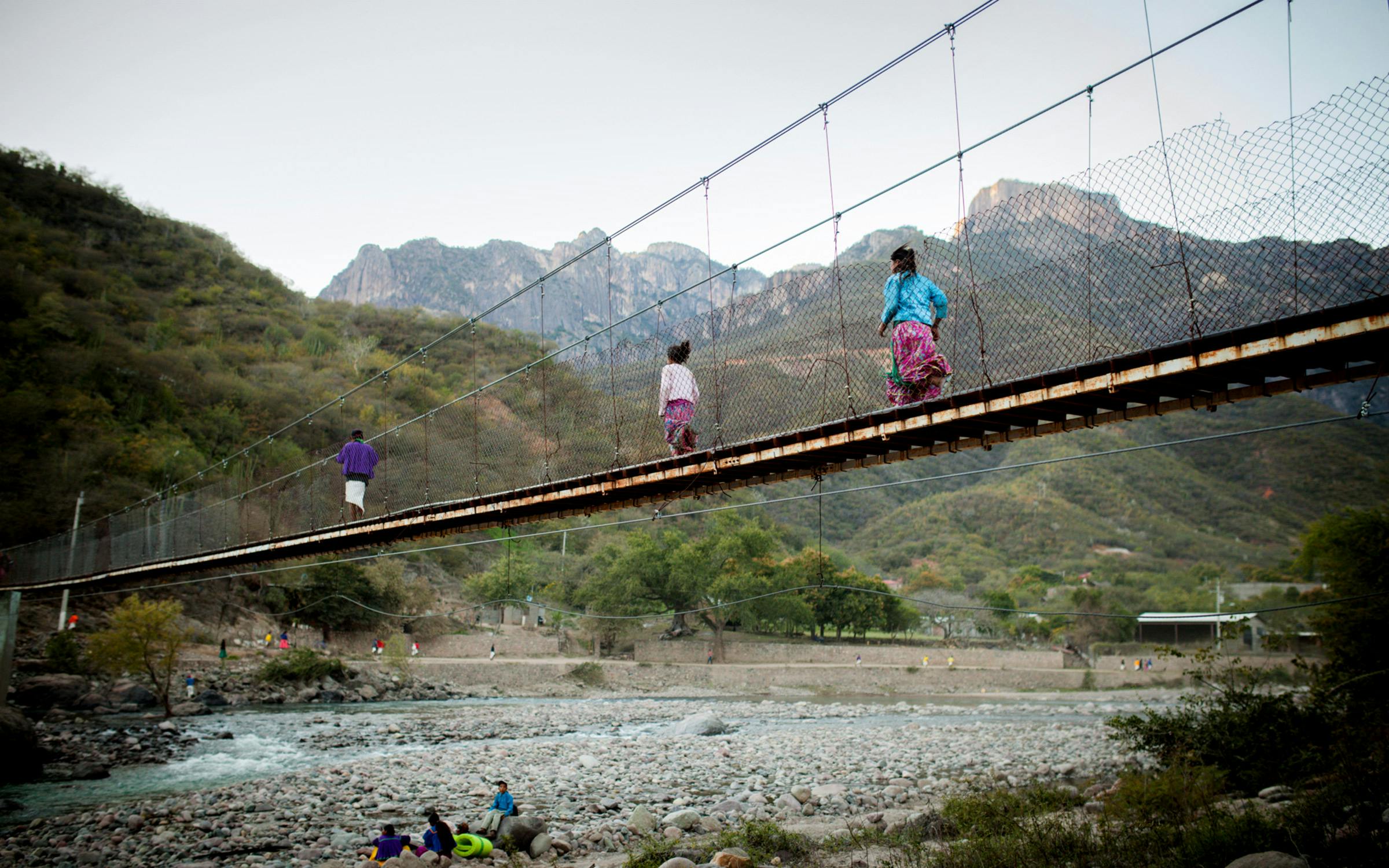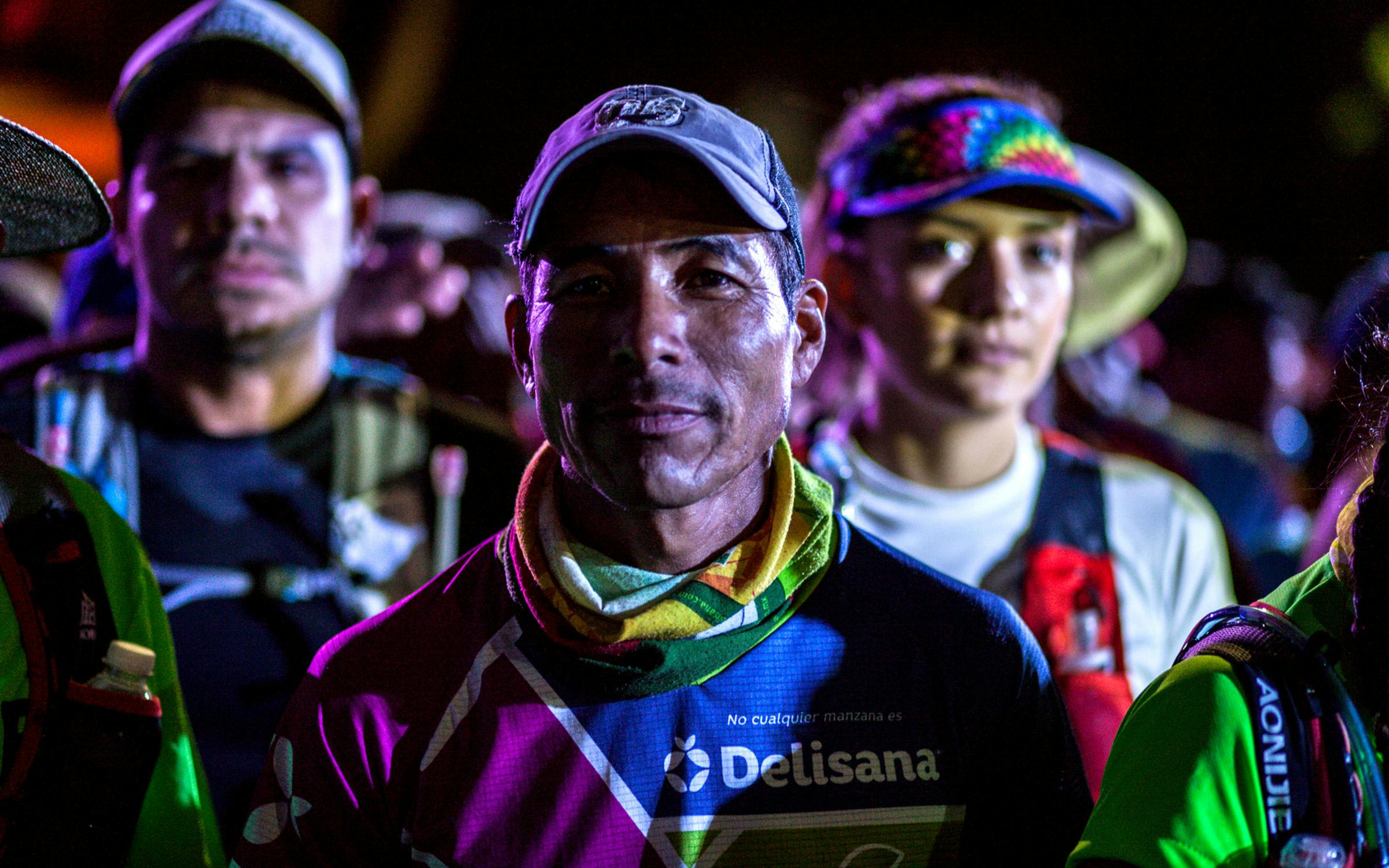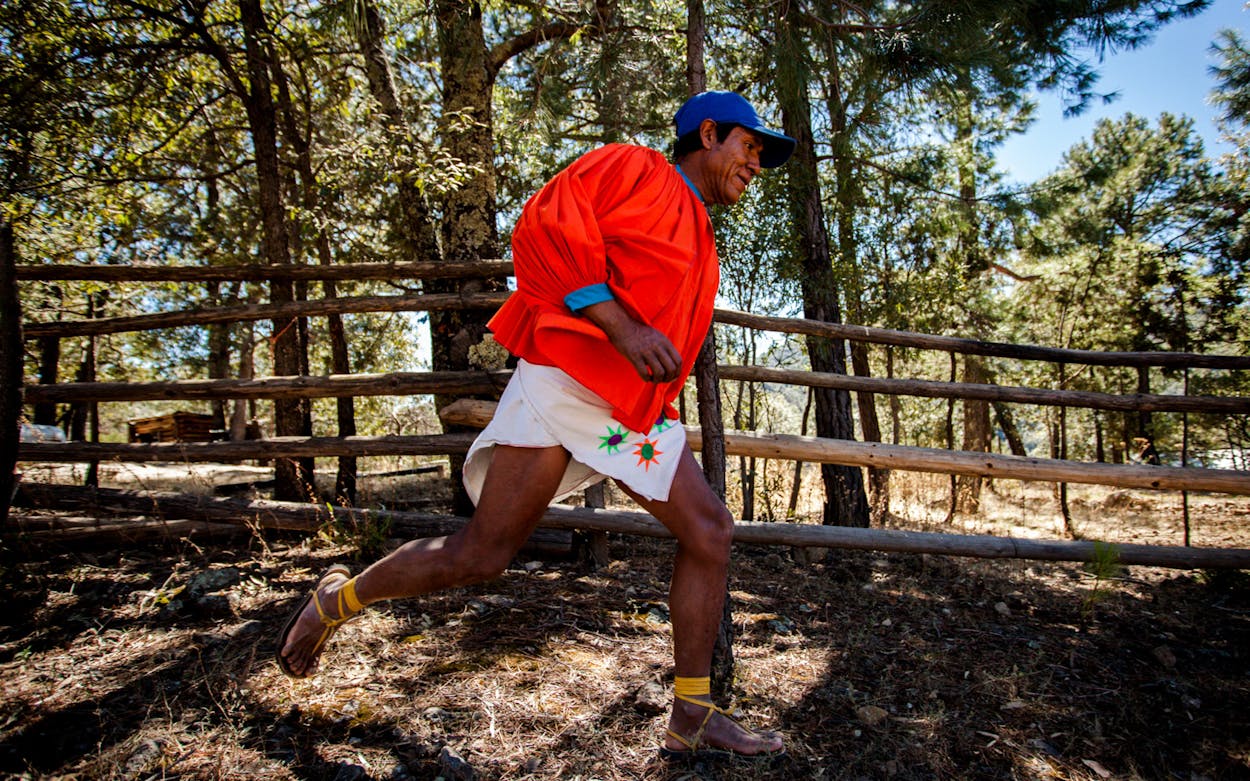At age five, when long-distance runner Irma Chávez competed in her first footrace, she ran more than twelve miles. She says this offhand in an interview in the new documentary The Infinite Race, her voice playing over a clip of her calling her children inside. Of course Chávez runs. In her community, running long distances is a regular part of life. The term “long-distance runner,” in the usual sense, isn’t necessarily accurate to describe Chávez; she doesn’t think of herself as primarily a competitor or athlete. She’s just a person who runs. Almost all of her people are.
Chávez, an activist and teacher, is a member of the Tarahumara people, an indigenous group of roughly 70,000 living in the remote Sierra Madre mountains of northern Mexico. In recent years, several Tarahumara athletes have earned recognition for their long-distance running ability, winning regional and international prizes in ultramarathons, including one from San Antonio to Austin as early as 1927. But running is more than sport for the Tarahumara; it’s ritual, culture, spirit, survival. In The Infinite Race, a new documentary inspired by a Texas Monthly feature by Ryan Goldberg on the same subject, Chávez is the heart and soul of the story, and the filmmakers wisely allow her to tell it herself.
Directed and produced by two-time Emmy-nominated filmmaker Bernardo Ruiz, The Infinite Race premiered on ESPN this week as part of the network’s acclaimed 30 for 30 series. The Infinite Race is unusual as a sports documentary. Since it’s not a biography of an athlete or team, Ruiz bends the genre to tell a story about strength and resilience in which athleticism is just one part, showing how the act of running is intricately connected to culture, politics, class, and even the climate crisis.

Early in the film, Chávez lays out the meaning of running. “Running is our resistance,” she says. “Our resistance to imposition.” When Spanish invaders, Jesuit missionaries, and Mexican settlers took over the Tarahumaras’ homeland starting in the 1500s, members of the tribe evaded them by running away, eventually settling deeper in the mountains. They ran “to save our nation, our culture,” Chávez explains. Parts of their identity had already almost been lost—the tribe’s original name, for example. Tarahumara is a Spanish corruption of the name Rarámuri, still used by some members, meaning “ones with light feet” or “foot runners.” Chávez is working on her master’s degree in the city of Chihuahua, where she studies the Rarámuri language and teaches classes on indigenous movements.
The film takes care to do justice to this cultural history, as well as that of another running phenomenon in the region: an international ultramarathon held there every March. The Ultra Maratón Caballo Blanco was founded in 2003 by an American long-distance runner named Micah True, an earthy, free-spirited type who started living in the region in the 1990s; locals affectionately nicknamed him Caballo Blanco (“white horse”). He’s a central character in the 2009 book sensation Born to Run: A Hidden Tribe, Superathletes, and the Greatest Race the World Has Never Seen, by journalist Christopher McDougall. The title is somewhat self-explanatory: amazed by the Tarahumara, McDougall wrote the book as an ethnography and an intervention, challenging accepted beliefs about healthy running practices. He attributes part of the Tarahumara’s success to their running with minimal footwear, using makeshift shoes made from tire treads. In the wake of the book’s publication, barefoot-style shoes became a craze. The number of international runners who traveled for the race also exploded.
Meanwhile, the Tarahumara, whose corn fields were drying up from drought, never saw any of these profits. As we watch the local race unfold over the years, with its great promise for cultural exchange, a clear divide is glaring. After one American runner and event organizer speaks about Born to Run, embracing its message for “people looking for something big, outside of their office, outside of their homes” and using words like mystery and adventure, Irma Chávez talks about the book more matter-of-factly. “Born to Run is a nice story,” she says. “But I don’t consider the ultramarathons to be part of our culture.”

The film derives its power from the great skill that can make or break a documentary: editing. Editor Flavia de Souza cuts interviews so that we understand conflicting points of view, but always centers the voices of Tarahumara and Mexicans from the region. Through their testimony, the documentary begins to unravel the complicated presence of cartel violence in the region. In recent years, the Sinaloa and Juárez cartels have encroached into this remote area, an ideal place for growing marijuana and opium poppies. It is Chávez who explains how the issues of environment and violence are interconnected, and how indigenous activists like herself have been murdered for speaking out. Since logging is often used to launder money in the drug trade, deforestation has increased. Since cartel members steal land, attack women, and kill anyone who stands in their way, the violence often displaces people from their homelands. All the while, climate change worsens droughts, and devastating failures of corn and bean crops drive the Tarahumara deeper into poverty. Prizewinning runner Silvino Cubesare Quimare, the protagonist of Texas Monthly’s 2017 feature, resorted to taking a cartel job physically running drugs across the border into Texas and New Mexico, rather than face starvation.
In an attempt to respond to these problems, the ultramarathon organizers promise food aid for members of the Tarahumara who participate, distributing vouchers for beans, rice, and other essentials. The organizers’ main focus, however, is still on making the English-speaking runners feel comfortable. The film’s climax is a spellbinding sequence filmed in 2015, when a cartel war broke out in the mountains and forced the race’s cancellation. In a rush to get out, the event organizer with the food vouchers took them back to California on a plane. The vouchers were apparently distributed to the best of the organization’s ability two or three months later, but the rift left in the community was vast.
The cartels, the Mexican government, and the U.S. government all play a role in the dangers facing the Tarahumara, but this smaller group of Americans who come to Mexico for the race is a unit that Ruiz homes in on as well, with a new, nuanced critique. In contrast to McDougall’s rose-colored approach in Born to Run, Ruiz, who is Mexican American, turns the ethnographic eye back on Americans, interrogating the white-savior mentality that’s done little to help the Tarahumara. Viewers are left questioning the nature of food aid, good intentions, and superficial understandings of other cultures. One well-edited, cringeworthy moment unfolds when, before we know what’s about to ensue, an adventure blogger from the U.S. insists that “Mexico’s not nearly as dangerous as the media makes it out to be.” The next cut is young runner Catalina Rascón, driving back to town from her school in the city to run the race in 2015, afraid of potential cartel violence but still committed to running. To leave, she later has to brave the mountains in the bed of a truck, with eight others, while the same adventure blogger flies out at the first sign of trouble.
For all the issues The Infinite Race touches on, the film never reduces the people at its center to one-dimensional symbols. The movie celebrates the rituals and culture of the Tarahumara, and it depicts running as something much greater and more beautiful than a single race can express. Ruiz and de Souza have told a daring, nuanced story. In a panel after the film aired online, Ruiz says he thinks of the film as “a part of a conversation.” He says he wanted to push back on terms like “superathlete” that seem to cast the Tarahumara in almost nonhuman terms, but he acknowledges that as an outsider, he can tell this story only so well. “What I hope will happen is in a couple of years, another writer or filmmaker will come and add another dimension,” he said. “Hopefully a Rarámuri or Tarahumaran filmmaker, who’s going to say, ‘What the hell did this Mexican American guy know?’”
- More About:
- Sports
- Television






